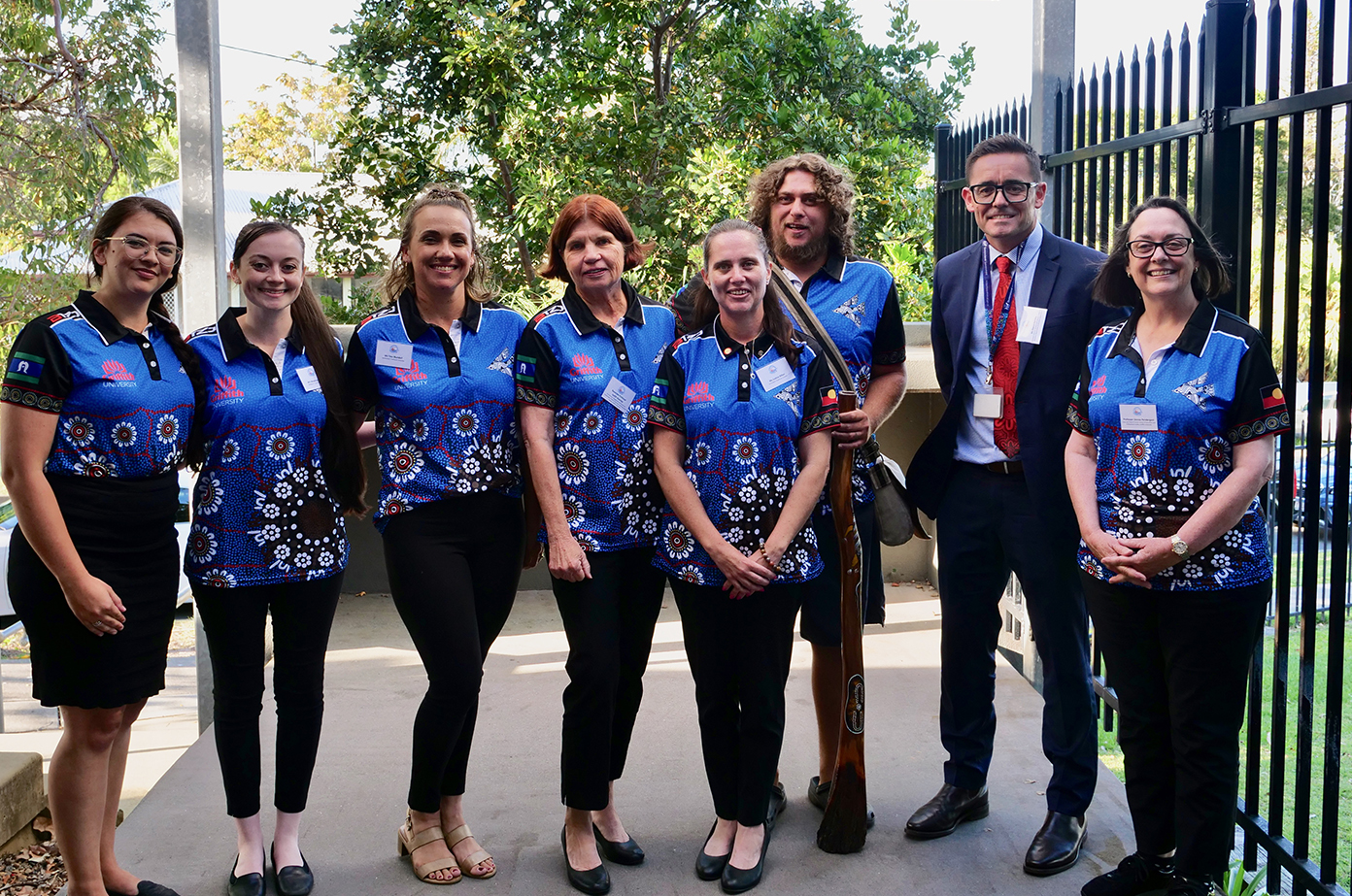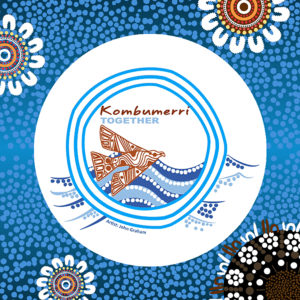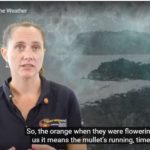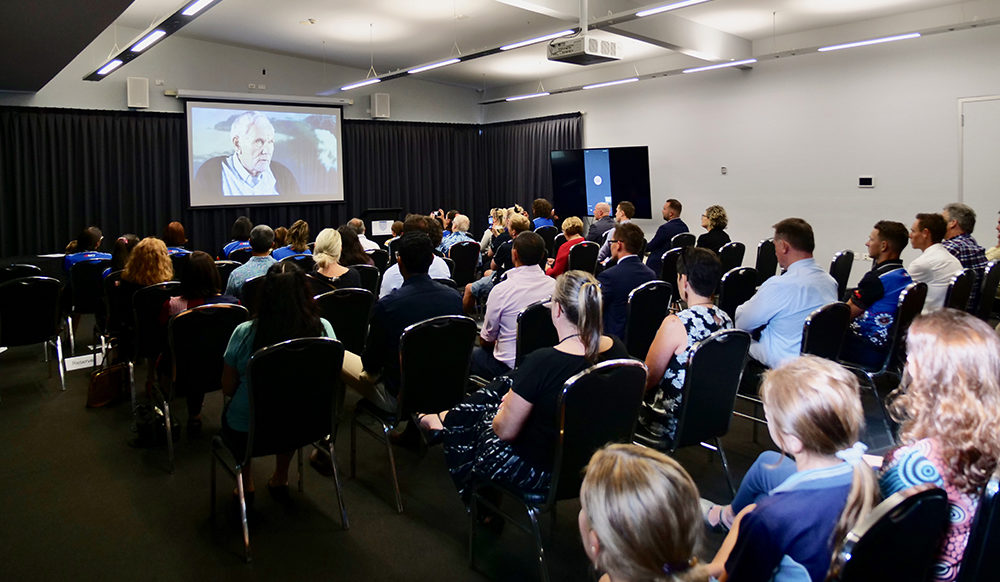
An exciting collaboration between Griffith University and the Kombumerri people will ensure local students develop a greater understanding of the Kombumerri’s custodianship of the land on which the Gold Coast campus is located.
In development for two years, the project has delivered a range of engaging video and other cultural tools for use by educators in local schools in a partnership between the University’s School of Education and Professional Studies (EPS), the Kombumerri Traditional Custodians, and the Queensland Department of Education.
The content features interviews with Kombumerri custodian Uncle Graham Dillon OAM, three of his grandchildren and two great nieces, all of whom are members of an extended family network and descendants of Andrew and Jenny Graham.
Dean and Head of the School of EPS Donna Pendergast said the unique collaboration would bring a new perspective to locally relevant stories.
“This project has been driven by Gold Coast educators who were curious about how to respectfully embed Kombumerri histories and culture sensitively into the classroom”
“This project has been driven by Gold Coast educators who were curious about how to respectfully embed Kombumerri histories and culture sensitively into the classroom,” Professor Pendergast said.
“The knowledge and stories shared by these contributors have been passed down through generations of families and provide insight into how Country has always been a place of teaching, research and learning for Kombumerri people.
 “Teachers can now utilise their professional expertise to embed this knowledge into unit planning relevant to their year level, learning area and school context.
“Teachers can now utilise their professional expertise to embed this knowledge into unit planning relevant to their year level, learning area and school context.
“Griffith University also aims to incorporate these perspectives into teaching practices and increase awareness and appreciation of local cultural knowledge and recognise the Kombumerri people’s custodianship of the land that is home to our Gold Coast campus.”
Justine Dillon said the project gathered Kombumerri knowledge and stories in a series of fifty short videos.
“As custodians of this land we have shared our personal perspectives, passed down through generations of families.

“The shared vision of this project has been to engage Gold Coast students in reconciliation, respect, and recognition of the world’s oldest continuous living culture.
“We are incredibly thankful to Griffith for providing this opportunity to our people as well, because it is also building our cultural heritage capacity for people and our family who don’t know a lot about local culture and have had a disconnect.
“I didn’t realise that I held so much knowledge and a lot of my family didn’t, which was a little sad for me but at the same time, its why we’re doing this project, to help everyone learn more about our culture and history.”
The stories, shared through digital and classroom resources, have relevance to teaching opportunities across Science, English, Maths, Humanities and Social Sciences, Technologies, The Arts and HPE.
One video features Justine Dillon speaking about the number of ways used by Kombumerri to predict the weather, which was important for tasks like gathering food.
“I think it goes back to that flora and fauna relationship as well as telling from the elements,” she explains in the five-minute resource, which relates to the learning areas of Science and Humanities and Social Sciences.
“Looking at the Sun, the Moon, the wind, everything they could tell to capture what was going on.
“We’d be going fishing and we’d always look at the Acacias, the orange and yellow. So, the orange when they were flowering, to us it means the mullet’s running, time to go hunt the mullet.
“The yellow means the whiting’s running. And there’s certain things flowering, tea trees and that, that mean different things to people in our tribe.”
Emerald Brewer’s contribution about Dreamtime stories provides a unique insight into the way generations learned about the dangers of the land or where they might find food.
“Dreamtime stories were important to the Kombumerri People of the Gold Coast because they were a way of sharing history that’s thousands of years old and they were also a way of telling our children and passing on to our children and their children’s children, different values that we held within our mob,” Emerald explained.
“For example, one story that speaks of a Bunyip in the river, is a way of passing on to our children and their children’s children, keep away from the river because you might drown.
“These stories were a way of sharing these values, giving warnings and they were also a way of letting our children know and other members of our mob, where different food sources were, where different significant sites were as well.”
In another video, Kombumerri custodians Madeleine Pugin and Tess Blundell share a story from their grandmother, the Nerang River Love Story of Muyim and Yimbin.

It explains why, today, on Gold Coast waterways, you will see water lily and bulrush close together.
Another video features Max Dillon speaking to the Kombumerri use of plants for medicine.
“I suppose the number one for salt-water people is the paperbark, the tea tree, you know, for many different reasons but it’s like a number one medicine that covers a lot of things: stings, bites, the ability to breathe,” he explained.
“I tend to look at three different things you can get from trees and plants and shrubs and they connect with each other as well. You can have a food resource, you can have a resource for spears and practical things, useful things like trade things, fish nets these types of utilities or you can have medicine.”
All resources are now available online at









